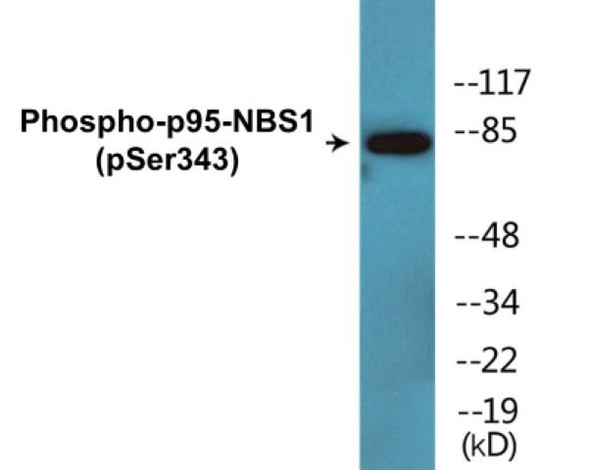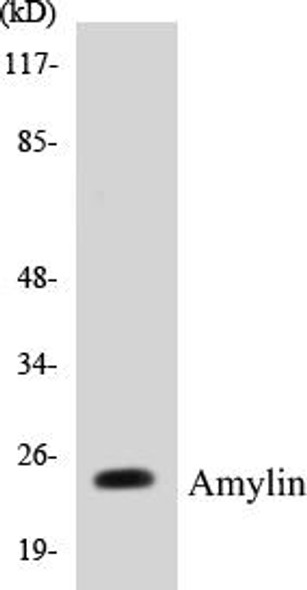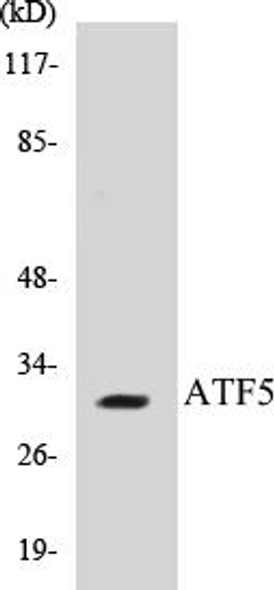Description
p95-NBS1 Colorimetric Cell-Based ELISA Kit
The p95/NBS1 Colorimetric Cell-Based ELISA Kit is a cutting-edge tool designed to detect and quantify levels of p95/NBS1 protein in cell lysates and tissue samples. This kit offers high sensitivity and specificity, ensuring accurate and reliable results for researchers studying DNA repair pathways and cellular responses to DNA damage.p95/NBS1 is a key player in the DNA damage response, playing a crucial role in maintaining genomic stability and preventing the accumulation of mutations that can lead to cancer and other diseases.
By measuring p95/NBS1 levels, researchers can gain valuable insights into cellular processes and potentially identify new targets for therapeutic interventions.With its easy-to-use protocol and robust performance, the p95/NBS1 Colorimetric Cell-Based ELISA Kit is an essential tool for scientists exploring the complex mechanisms of DNA damage repair and its implications for human health and disease. Trust Assay Genie to provide you with the reliable and accurate data you need to advance your research.
| Product Name: | p95-NBS1 Colorimetric Cell-Based ELISA |
| Product Code: | CBCAB00798 |
| ELISA Type: | Cell-Based |
| Target: | p95-NBS1 |
| Reactivity: | Human |
| Dynamic Range: | > 5000 Cells |
| Detection Method: | Colorimetric 450 nmStorage/Stability:4°C/6 Months |
| Format: | 96-Well Microplate |
The p95-NBS1 Colorimetric Cell-Based ELISA Kit is a convenient, lysate-free, high throughput and sensitive assay kit that can detect p95-NBS1 protein expression profile in cells. The kit can be used for measuring the relative amounts of p95-NBS1 in cultured cells as well as screening for the effects that various treatments, inhibitors (ie siRNA or chemicals), or activators have on p95-NBS1.
Qualitative determination of p95-NBS1 concentration is achieved by an indirect ELISA format. In essence, p95-NBS1 is captured by p95-NBS1-specific primary antibodies while the HRP-conjugated secondary antibodies bind the Fc region of the primary antibody. Through this binding, the HRP enzyme conjugated to the secondary antibody can catalyze a colorimetric reaction upon substrate addition. Due to the qualitative nature of the Cell-Based ELISA, multiple normalization methods are needed:
| 1. | A monoclonal antibody specific for human GAPDH is included to serve as an internal positive control in normalizing the target absorbance values. |
| 2. | Following the colorimetric measurement of HRP activity via substrate addition, the Crystal Violet whole-cell staining method may be used to determine cell density. After staining, the results can be analysed by normalizing the absorbance values to cell amounts, by which the plating difference can be adjusted. |
| Database Information: | Gene ID: 4683, UniProt ID: O60934, OMIM: 114480/251260/602667/609135, Unigene: Hs.492208 |
| Gene Symbol: | NBN |
| Sub Type: | None |
| UniProt Protein Function: | NBS1: a member of the MRE11/RAD50 double-strand break repair complex. Involved in DNA double-strand break repair and DNA damage-induced checkpoint activation. Mutation results in the Nijmegen breakage syndrome (NBS), an autosomal recessive chromosomal instability syndrome. |
| UniProt Protein Details: | Protein type:Cell cycle regulation; DNA repair, damage Chromosomal Location of Human Ortholog: 8q21 Cellular Component: cytosol; Mre11 complex; nuclear chromosome, telomeric region; nuclear inclusion body; nucleolus; nucleoplasm; nucleus; PML body; replication fork Molecular Function:ATP-dependent DNA helicase activity; damaged DNA binding; protein binding; protein N-terminus binding; transcription factor binding Biological Process: blastocyst growth; cell cycle arrest; cell proliferation; DNA damage checkpoint; DNA damage response, signal transduction by p53 class mediator; DNA duplex unwinding; DNA repair; double-strand break repair; double-strand break repair via homologous recombination; double-strand break repair via nonhomologous end joining; double-strand break repair via synthesis-dependent strand annealing; isotype switching; meiotic cell cycle; mitotic cell cycle checkpoint; mitotic cell cycle G2/M transition DNA damage checkpoint; neuromuscular process controlling balance; positive regulation of kinase activity; positive regulation of protein amino acid autophosphorylation; positive regulation of telomere maintenance; regulation of DNA replication initiation; telomere maintenance; telomeric 3' overhang formation Disease: Aplastic Anemia; Leukemia, Acute Lymphoblastic; Nijmegen Breakage Syndrome |
| NCBI Summary: | Mutations in this gene are associated with Nijmegen breakage syndrome, an autosomal recessive chromosomal instability syndrome characterized by microcephaly, growth retardation, immunodeficiency, and cancer predisposition. The encoded protein is a member of the MRE11/RAD50 double-strand break repair complex which consists of 5 proteins. This gene product is thought to be involved in DNA double-strand break repair and DNA damage-induced checkpoint activation. [provided by RefSeq, Jul 2008] |
| UniProt Code: | O60934 |
| NCBI GenInfo Identifier: | 74762960 |
| NCBI Gene ID: | 4683 |
| NCBI Accession: | O60934.1 |
| UniProt Secondary Accession: | O60934,O60672, Q32NF7, Q53FM6, Q63HR6, Q7LDM2, B2R626 B2RNC5, |
| UniProt Related Accession: | O60934 |
| Molecular Weight: | 84,959 Da |
| NCBI Full Name: | Nibrin |
| NCBI Synonym Full Names: | nibrin |
| NCBI Official Symbol: | NBN |
| NCBI Official Synonym Symbols: | ATV; NBS; P95; NBS1; AT-V1; AT-V2 |
| NCBI Protein Information: | nibrin |
| UniProt Protein Name: | Nibrin |
| UniProt Synonym Protein Names: | Cell cycle regulatory protein p95; Nijmegen breakage syndrome protein 1 |
| Protein Family: | Nibrin |
| UniProt Gene Name: | NBN |
| UniProt Entry Name: | NBN_HUMAN |
| Component | Quantity |
| 96-Well Cell Culture Clear-Bottom Microplate | 2 plates |
| 10X TBS | 24 mL |
| Quenching Buffer | 24 mL |
| Blocking Buffer | 50 mL |
| 15X Wash Buffer | 50 mL |
| Primary Antibody Diluent | 12 mL |
| 100x Anti-Phospho Target Antibody | 60 µL |
| 100x Anti-Target Antibody | 60 µL |
| Anti-GAPDH Antibody | 60 µL |
| HRP-Conjugated Anti-Rabbit IgG Antibody | 12 mL |
| HRP-Conjugated Anti-Mouse IgG Antibody | 12 mL |
| SDS Solution | 12 mL |
| Stop Solution | 24 mL |
| Ready-to-Use Substrate | 12 mL |
| Crystal Violet Solution | 12 mL |
| Adhesive Plate Seals | 2 seals |
The following materials and/or equipment are NOT provided in this kit but are necessary to successfully conduct the experiment:
- Microplate reader able to measure absorbance at 450 nm and/or 595 nm for Crystal Violet Cell Staining (Optional)
- Micropipettes with capability of measuring volumes ranging from 1 µL to 1 ml
- 37% formaldehyde (Sigma Cat# F-8775) or formaldehyde from other sources
- Squirt bottle, manifold dispenser, multichannel pipette reservoir or automated microplate washer
- Graph paper or computer software capable of generating or displaying logarithmic functions
- Absorbent papers or vacuum aspirator
- Test tubes or microfuge tubes capable of storing ≥1 ml
- Poly-L-Lysine (Sigma Cat# P4832 for suspension cells)
- Orbital shaker (optional)
- Deionized or sterile water
*Note: Protocols are specific to each batch/lot. For the correct instructions please follow the protocol included in your kit.
| Step | Procedure |
| 1. | Seed 200 µL of 20,000 adherent cells in culture medium in each well of a 96-well plate. The plates included in the kit are sterile and treated for cell culture. For suspension cells and loosely attached cells, coat the plates with 100 µL of 10 µg/ml Poly-L-Lysine (not included) to each well of a 96-well plate for 30 minutes at 37°C prior to adding cells. |
| 2. | Incubate the cells for overnight at 37°C, 5% CO2. |
| 3. | Treat the cells as desired. |
| 4. | Remove the cell culture medium and rinse with 200 µL of 1x TBS, twice. |
| 5. | Fix the cells by incubating with 100 µL of Fixing Solution for 20 minutes at room temperature. The 4% formaldehyde is used for adherent cells and 8% formaldehyde is used for suspension cells and loosely attached cells. |
| 6. | Remove the Fixing Solution and wash the plate 3 times with 200 µL 1x Wash Buffer for five minutes each time with gentle shaking on the orbital shaker. The plate can be stored at 4°C for a week. |
| 7. | Add 100 µL of Quenching Buffer and incubate for 20 minutes at room temperature. |
| 8. | Wash the plate 3 times with 1x Wash Buffer for 5 minutes each time. |
| 9. | Add 200 µL of Blocking Buffer and incubate for 1 hour at room temperature. |
| 10. | Wash 3 times with 200 µL of 1x Wash Buffer for 5 minutes each time. |
| 11. | Add 50 µL of 1x primary antibodies (Anti-p95-NBS1 Antibody and/or Anti-GAPDH Antibody) to the corresponding wells, cover with Parafilm and incubate for 16 hours (overnight) at 4°C. If the target expression is known to be high, incubate for 2 hours at room temperature. |
| 12. | Wash 3 times with 200 µL of 1x Wash Buffer for 5 minutes each time. |
| 13. | Add 50 µL of 1x secondary antibodies (HRP-Conjugated AntiRabbit IgG Antibody or HRP-Conjugated Anti-Mouse IgG Antibody) to corresponding wells and incubate for 1.5 hours at room temperature. |
| 14. | Wash 3 times with 200 µL of 1x Wash Buffer for 5 minutes each time. |
| 15. | Add 50 µL of Ready-to-Use Substrate to each well and incubate for 30 minutes at room temperature in the dark. |
| 16. | Add 50 µL of Stop Solution to each well and read OD at 450 nm immediately using the microplate reader. |
(Additional Crystal Violet staining may be performed if desired – details of this may be found in the kit technical manual.)






